27 Section 3-3: Der-Words vs. ein-words
3-3: Der-words vs. ein-words
In Chapter 1, you learned how to distinguish between the definite article (der/die/das) and the indefinite article (ein/eine).
Masculine: der Pulli→ein Pulli
Feminine: die Bluse→eine Bluse
Neuter: das T-shirt→ein T-shirt
Note that neither masculine nor neuter add any endings for ein-words. This also applies to possessive adjectives.
Masculine: der Bikini→ihr Bikini (no ending)
Feminine: die Mütze→seine Mütze (adds –e)
Neuter: das Hemd→mein Hemd (no ending)
Plural: die Schuhe→deine Schuhe (adds –e)
In Chapter 2, you continued by adding the accusative case definite and indefinite endings.
Masculine: Ich habe einen Cousin.
Feminine: Wir besuchen unsere Nichte.
Neuter: Er kennt mein Kind.
Plural: Die Arbeiter produzieren die Sandalen.
You have learned all of the ein-words so far, i.e., words that have the same pattern of endings as “ein/eine.”
⇒NEU: There are a few more words that follow the same pattern as the definite article (der/die/das/den). They are listed below with a dash after them to show where the new ending will go.
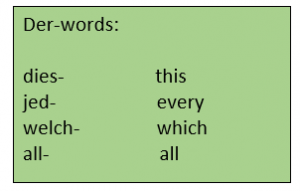
HOW TO USE THESE DER-WORDS:
- Look at the definite article. Ex. der See (the lake)
- Put the letters you see at the end of it on the new der-word.
- dieser See (this lake)
Examples with dies– in the nominative case:
- Masculine: der Anzug→dieser Anzug (this suit)
- Feminine: die Jacke→diese Jacke (this jacket)
- Neuter: das Kleid→dieses Kleid (this dress)
- Plural: die Kleider→diese Kleider (these dresses)
Examples with jed– in the nominative case:
- Masculine: der Baum→jeder Baum (every tree)
- Feminine: die Universität→jede Universität (every university)
- Neuter: das Dorf→jedes Dorf (every village)
Examples with welch– in the nominative case:
- Masculine: der Hut→welcher Hut (which hat)
- Feminine: die Jeans→welche Jeans (which jeans)
- Neuter: das Kino→welches Kino (which movie theater)
- Plural: die Zeitungen→welche Zeitungen (which newspapers)
In short, dies-, jed-, welch-, and all– will have the exact same ending as whatever der/die/das/den has.
HOWEVER…all– will usually be plural.
Beispiel: Alle Studenten haben Hausaufgaben.
WHY? Because it would sound really strange to say, “All Student have homework.”

Video. Click to see me reteaching der-words vs. ein-words.
Ex. B: Welche Klamotten sind schick?! You are shopping with a friend at a secondhand store. Using der-words (dies-, jed-, welch-, all-), describe the clothing you come across and give your opinion.
Beispiel: 


A: Ich finde diese Jacke okay.
B: Nein, sie ist zu klein.
ODER
B: Ja, ich finde sie auch gut. Ich finde dieses Hemd schick.
A: Nein, es ist häßlich!
(REMEMBER! If the item is a direct object, it MUST be in the accusative case, aka, masculine gets –en.)









Ex. C: Welches Buch ist mein Buch? With your classmates, practice switching between der-words and ein-words by pointing out which items belong to you.
A: Welches Buch ist dein Buch?
B: Dieses Buch ist mein Buch. (Pointing to book.)
When you run out of your own items, swap to classroom items and ask what belongs to us.
A: Welcher Tisch ist unser Tisch?
B: Dieser Tisch ist unser Tisch?
(Yes, I realize this exercise sounds sort of like two toddlers learning to talk, but we have to start simple!)
Ex. D: Welche Studentin studiert Geschichte? Who among your classmates is mentioned in these questions? If more than one student satisfies the answers, feel free to answer in the plural.
Beispiel: Welche Studentin studiert Geschichte?
→Diese Studentin studiert Geschichte. (point to student)
ODER
→Diese Studentinnen studieren Geschichte.
![]()
- Welcher Student lernt Spanisch?
- Welcher Student spielt Fußball?
- Welcher Student spielt gern Videospiele?
- Welche Studentin singt gern?
- Welche Studentin schreibt gern Gedichte?
- Welcher Student liest gern Comichefte?
- Welcher Student macht gern Hausaufgaben?
- Welche Studentin wohnt in Amerika?
- Welcher Student schwimmt nicht gern?
- Welche Studentin kocht nicht gern?
- Welcher Student wandert am Wochenende?
- Welche Studentin arbeitet zu viel?
- Welcher Student schläft nicht genug?
- Welcher Student hat heute Deutsch?
- Welche Studentin macht gern Sport?
Extra Practice: Try Claudia Kost’s and Crystal Sawatzky’s der-word activity with instant feedback.
Die Tiere





1 2 3 4 5






6 7 8 9 10


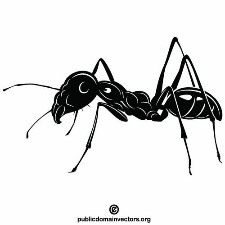
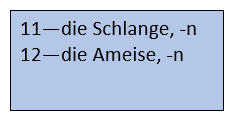
11 12
Ex. F: Jede Ameise ist fleißig! Using the animal vocabulary and jed-/alle, make generalizations. Feel free to use adjectives, verbs, or any other words you’ve learned so far. If you disagree with your classmates’ answers, argue your point in German!
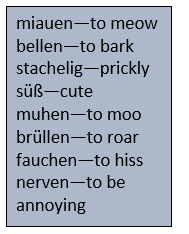
Beispiel: Ameise
A: Jede Ameise ist fleißig. Jede Ameise arbeitet.
B: Nein, alle Ameisen nerven.
- Igel
- Hund
- Katze
- Pferd
- Tiger
- Löwe
- Delphin
- Schwein
- Vogel
- Kuh
- Schlange
Video. Click to watch Easy German’s video about dogs.
Other der-words that have grown somewhat obsolete:
So far, you have been using dies-, jed-, welch-, and all- as der-words. There are a few more that function the same way, but they have been used less often over the past thirty years than previously.
- manch- many (a): Manche Kinder lernen Deutsch.
- jen- that: Jene Professorin geht nach Hause.
- solch- such: Solche Studenten arbeiten nicht.
Like all-, manch– and solch– are most often used in the plural forms
For now, it will be fine just to recognize them when you see them. You will see them more often in older texts, such as fairy tales or older German literature.
Ex. G: Wie finden Sie diesen Gürtel? Ask your classmates their opinion of the following clothing items. Don’t forget that any direct objects must be in the accusative case, i.e. masculine adds an extra –en.
Beispiel: 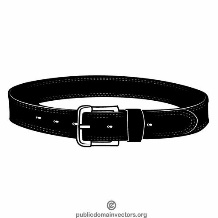
A: Wie findest du diesen Gürtel?
B: Ich finde ihn altmodisch.
A: Ich finde ihn aber schick!
 5.
5. 
-
 6.
6. 
 7.
7. 
 8.
8. 
Ex. H: Der-words. Fill in with the correct form of the der- or ein-word. BEWARE! Both are in this exercise.
Ex. I: Was soll ich kaufen? Tell your partner which option to choose (or not to choose!). Because these will be commands, you will need to use the imperative. Make sure that your direct object is in the accusative case. Remember, nicht will go AFTER the direct object and in front of prepositional phrases. Add one or two sentences after your command to explain why your partner should or should not choose this option.
Beispiel: kaufen 

A: Kauf diese Jacke! (points to yellow jacket)
B: Aber warum denn?
A: Sie ist neu.
ODER
A: Kauf diese Jacke nicht! (points to gray jacket)
B: Aber warum denn nicht?
A: Sie ist zu alt.
- tragen


- essen


- spielen


- lesen


- reisen (nach)


- wohnen (in)


- nehmen


![]() Check your listening comprehension with Claudia Kost’s and Crystal Sawatzky’s listening activity using der-words.
Check your listening comprehension with Claudia Kost’s and Crystal Sawatzky’s listening activity using der-words.
Ex. H: Video. Nicos Weg. Episode 24: Das Auto is rot. Watch episode 24 and do the online activities. You will review adjectives and their opposites, which you learned in Chapter 1, as well as how to negate adjectives by putting nicht in front of them. You will also review the conjugation of the verb haben.

